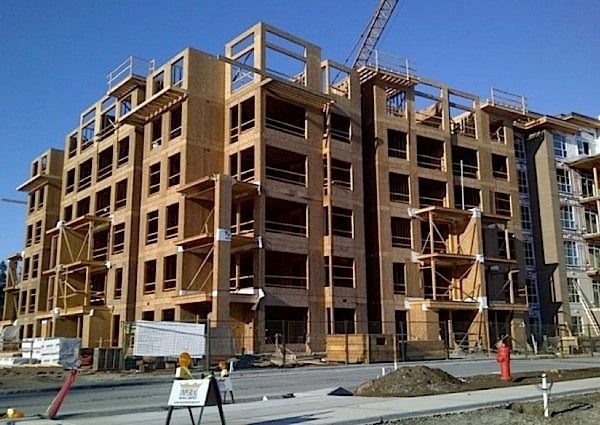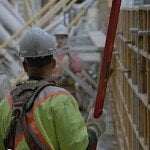Beginning on January 1, 2015, Ontario’s mid-rise builders will have more options regarding construction materials. On that date, changes to the Ontario Building Code will make it legal to construct wood-frame buildings up to six storeys high. Previously, four storeys was the height limit for wood frame construction. A private member’s bill introduced at Queen’s Park in 2012 by the MPP for Thunder Bay-Atikokan, who is also the Minister of Natural Resources and Forestry, has passed and will become law on January 1. According to the government, the changes will give builders more flexibility in choosing building materials, while setting stringent fire safety requirements.

Various politicians and numerous wood and forestry industry spokespersons have praised the move. The MPP for Thunder Bay, Michael Gravelle, said that he has been lobbying for the change “over the past number of years,” saying that wood is “the only building material that is both renewable and recyclable.” He says the Building Code changes will “undoubtedly” help to stimulate the forestry industry in the North and create jobs. Gravelle, also the Minister of Northern Development and Mines, went as far as to say that he foresees a “resurgence” in the forestry sector. Forestry currently employs about 150,000 in direct and indirect jobs, according to government figures.
The Canadian Wood Council is understandably pleased with the announcement. It called wood a “safe, strong and sophisticated” building solution. Echoing this thought, the director of Ontario Wood WORKS! said that wood will give architects and designers new opportunities for innovation, as well as helping cities meet densification plans and create more affordable housing.
Questions of the safety of wood-frame construction have been raised, mainly by opponents in competing industries, but the Forest Products Association of Canada insists that wood-frame mid-rise buildings will have the same level of safety as buildings constructed with other materials. This is due to significant improvements in wood-based science and to the use of sprinkler systems. The new code requires that stairwells will still have to be constructed of non-combustible materials, while roofs will have to be fire resistant.
Timber producer, EACOM Timber Corporation, also had praise for the government’s move. Besides the aesthetic and stylistic benefits of working with wood, there will be additional benefits to the province and to consumers, the company said. Those benefits will include job creation, more affordable housing, increased taxes for municipalities, and reduced carbon footprint in the construction industry. Speaking of the cost benefits, Kevin Edgson, president and CEO of EACOM, said, “These savings can be passed through the system resulting in more affordable condo or rental units being brought to the market.”
































